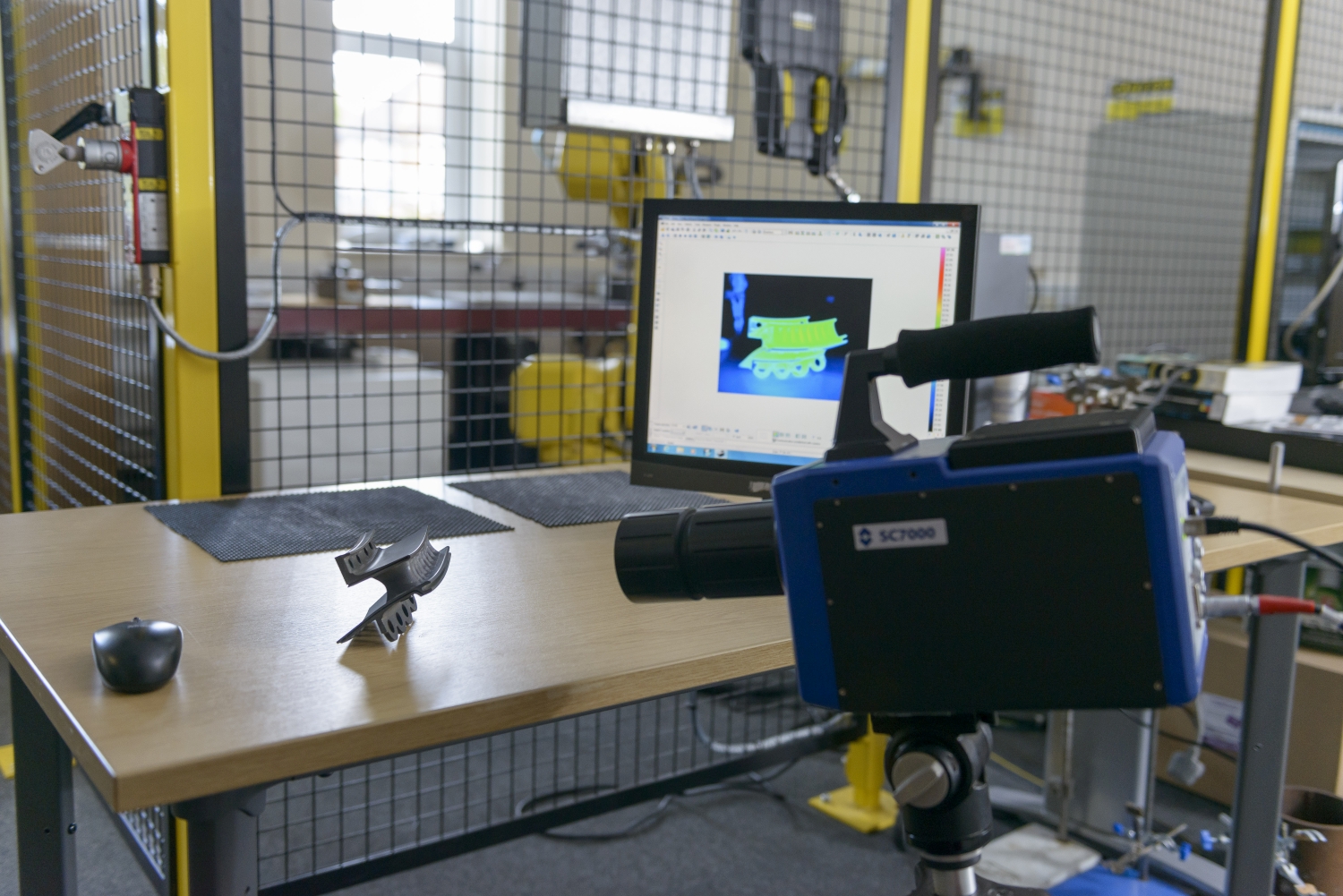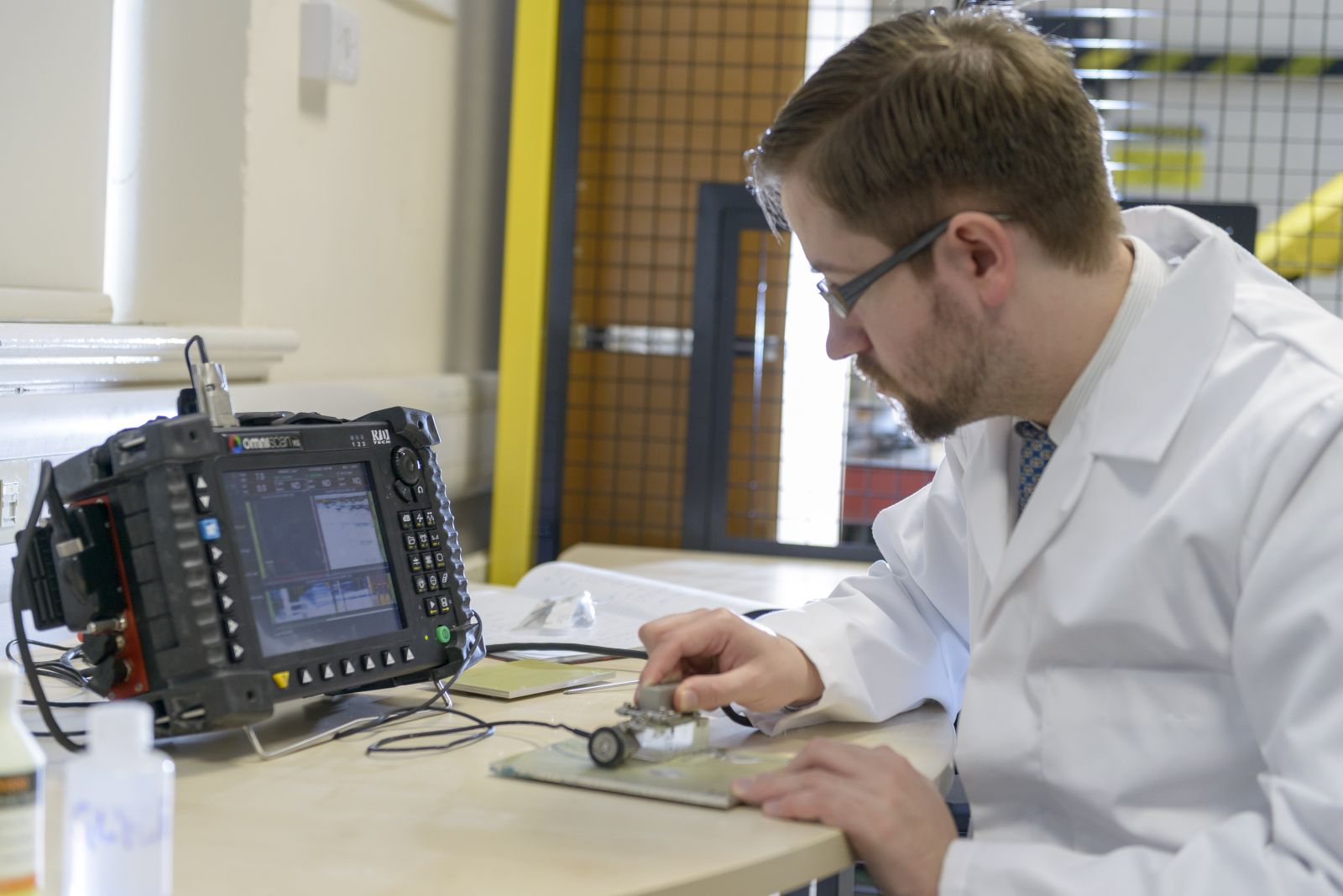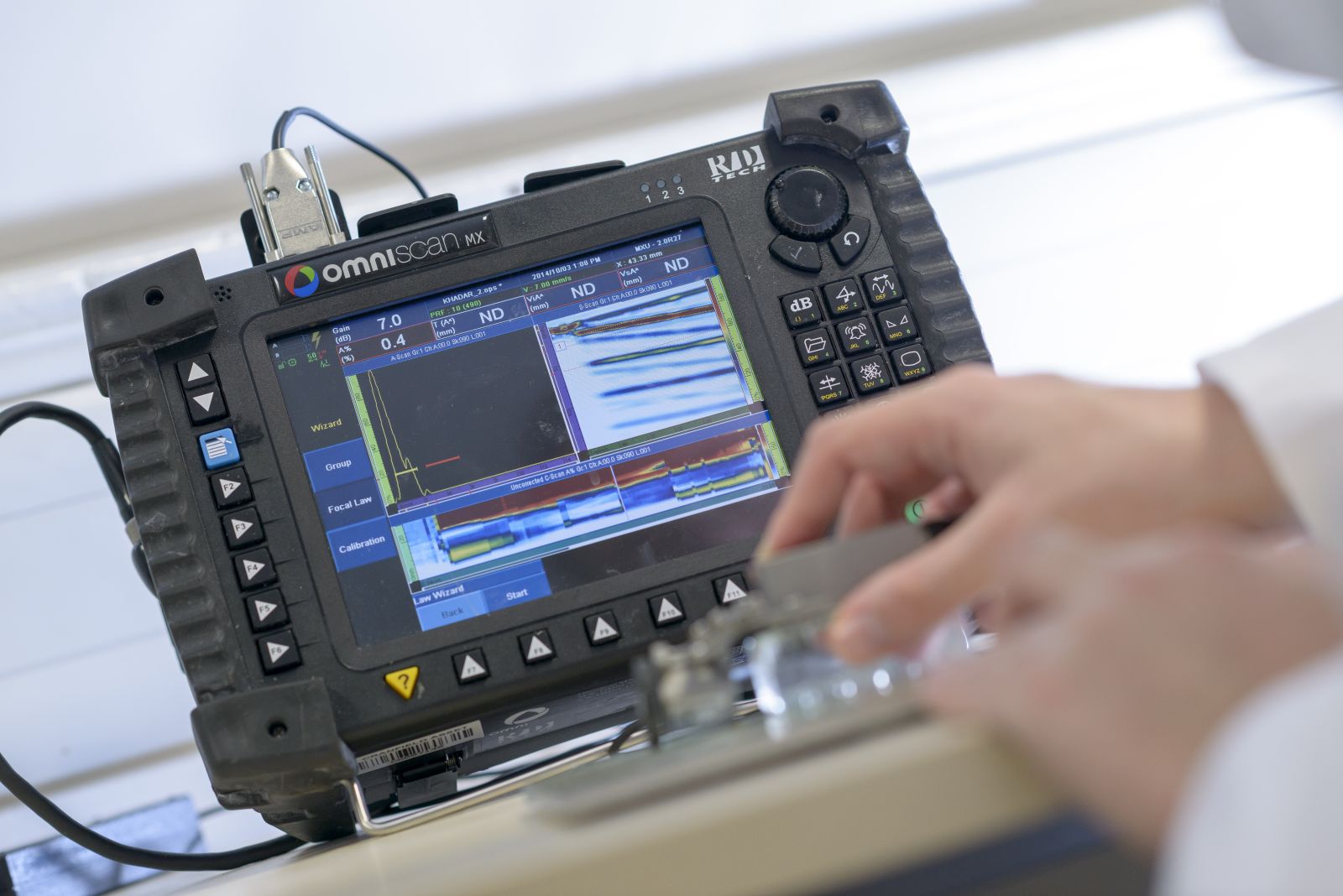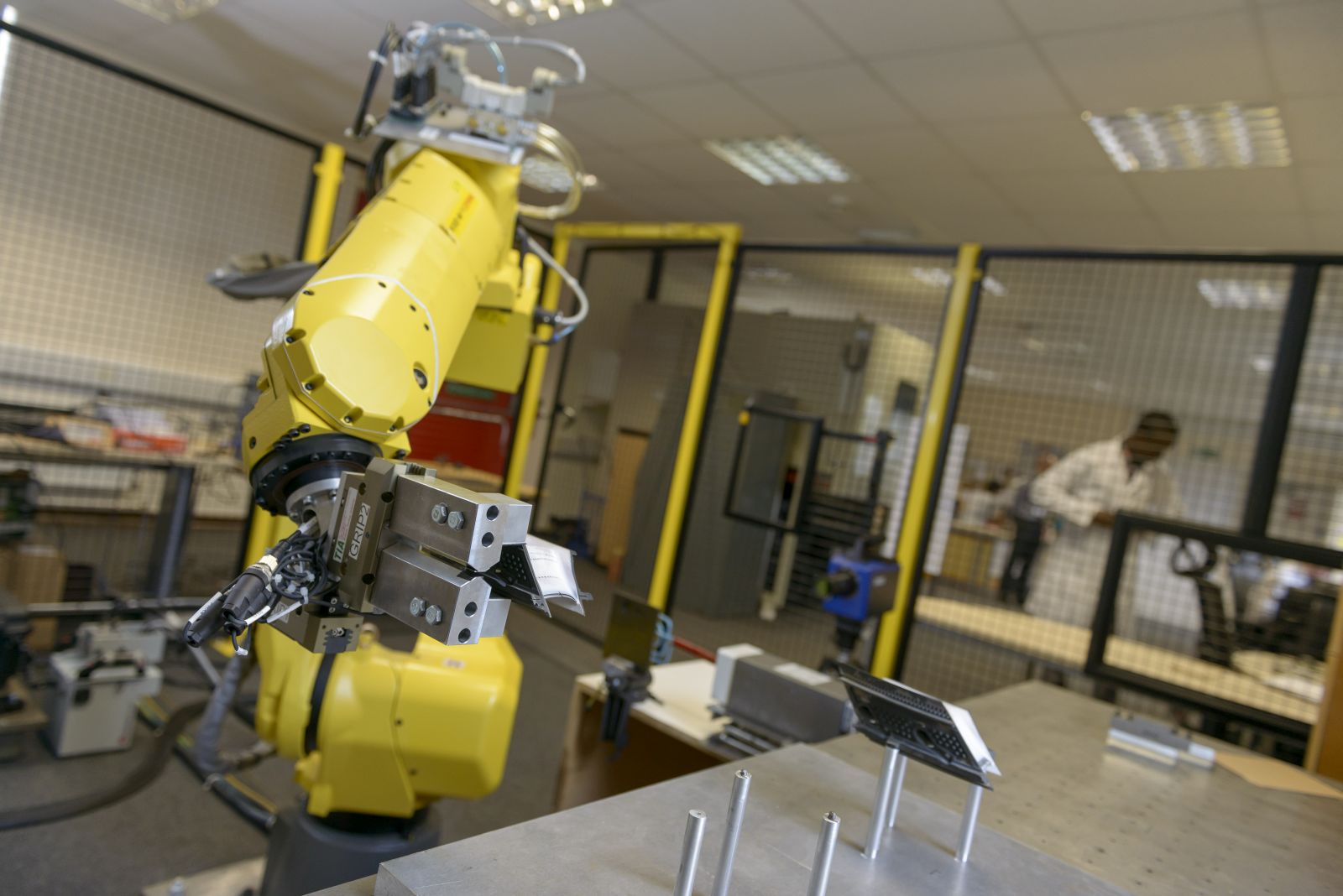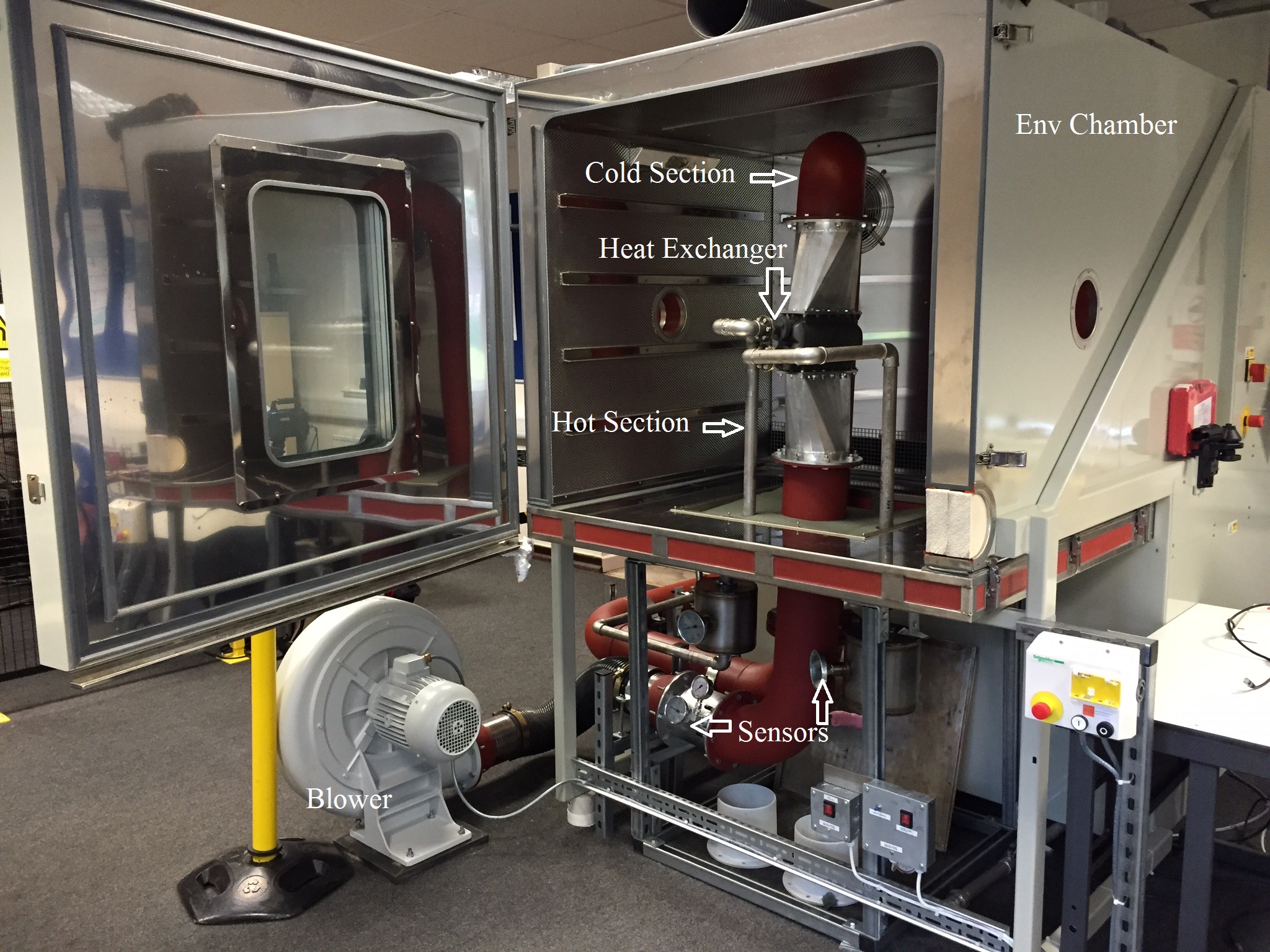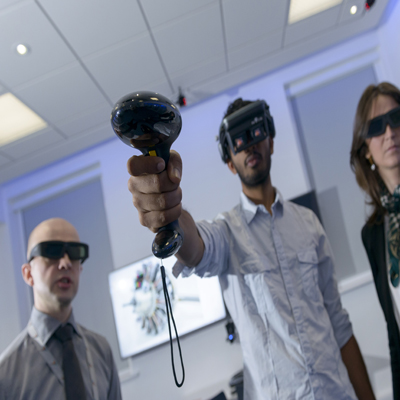The Through-life Engineering Services Centre combines innovative research and engineering knowledge to tackle some of the major research challenges in through-life engineering services. Its Degradation Assessment Group has over five years’ experience in the area of fault and damage detection and characterisation.
Our facilities
The Studio at Cranfield, an integral part of the Centre, is designed to develop knowledge, in-house manufacturing technology demonstrations, novel methodologies and techniques and associated toolsets.
Related areas
The Degradation Assessment Group works closely with the Digital Service Engineering Group.
For more information please contact Dr Pavan Addepalli, Research Fellow – Degradation Assessment.
Characterisation of in-service component feedback for system design and manufacturing
A thorough understanding of the key mechanisms of failure which include wear, fracture mechanics, fatigue and corrosion at the feature, component and assembly levels, supported by knowledge of how to identify and diagnose such failures along with the ability to predict the remaining useful life, and the means of restoring ‘as designed’ functionality are all essential to through-life product support.
This research develops technology demonstrators which will capture component failure, damage and degradation data using well-known technologies: 3D imaging, 3D X-ray CT, phased array, eddy current and pulsed thermography for a variety of degradations and materials. The research studies the link between service performance and the initial system architecture, and develops new guidance for system design for improved service life thereby reducing the engineering service effort required and subsequent cost.
Reduction of ‘no fault found’ through system design
The research aims to identify equipment design features (i.e. functions/components, measures of complexity or BIT/BITE) and correlate these to NFF attributes (i.e. fraction of faults detected/isolated, fraction of false alarms and rate of false alarms) in order to develop a NFF rate/burden predictor. The overall impact of such a NFF rate/burden predictor is that it will be used at the design phase, or to verify a proposed modification, to aid in developing equipment which is increasingly immune to NFF throughout its operational life. Intermittent failures in electronic systems, the reduced size of electronic chips, and increase in their interactions and complexities have led to difficulties in diagnosing system faults; in particular, when these faults occur at the component level and are intermittent in nature.
This research investigates the tools and techniques which can be used to successfully diagnose intermittent faults and to provide intelligent reasoning on intermittent fault progression. Furthermore, the research develops in-situ health monitoring technology to detect and characterise intermittent failures arising from such causes as dry solder joints, loose connections, damaged wiring and environmental degradation, which heavily contribute to the burden of NFF.
Our people
- Dr Gustavo Castelluccio
- Dr Yifan Zhao
- Pavan Addepalli
- Dr Barmak Honarvarshakibaei Asli
- Dr Ebiakpo Kakandar
- Dr Arijit Lodh
- Dr Haochen Liu
- Lawrence Tinsley
- Adisorn Sirikham
- Robin Du
- Lichao Wang
- Farhan Ashraf
- Youdao Wang
- Jiaru Zou
Our capabilities
The Studio supports the TES Centre’s research activities providing the necessary instrumentation and facilities to carry out experimental investigations. The technical capabilities include:
- Environmental test chamber – supports thermal cycling, dielectric over-voltage, thermal stress and current overload analysis by providing environmental control chamber capable of operating between -70°C and 180°C with variable humidity settings control (10-90%).
- Robotics – the Studio houses two robotic systems
- FANUC robotics system – the robotic arm system provides the necessary support to automate inspection routines and thereby improving servitisation of components.
- The Turtlebot2 – a research level mobile robotic platforms from Clearpath Robotics Inc, combined with an advanced 5 DoF robotic arm from Trossen Robotics provide the capabilities for mobile robotic manipulation. Integrated with the state of the art robotics operating system (ROS) the robotic platforms lie on the cutting edge of robotics research allowing the centre to investigate how mobile collaborative robotics can be used within an industrial setting.
- Non-destructive testing – multiple systems
- Pulsed thermography system – thermoscope II equipment from Thermal Wave Imaging Inc., capable of carrying out infrared imaging inspection of various metallic and non-metallic parts detecting sub-surface damage such as delamination, disband, corrosion, wear debris, component degradation etc. Currently the FANUC Robot automates the inspection by either providing the part to the camera or placing the camera over the part to be inspected thus enabling small and large component automated inspection.
- Infrared camera systems
- FLIR 7600 R&D camera – a Stirling cooled, indium antimonide quantum well detector infrared camera capable of operating at 100Hz at a 640X512 pixel resolution. This advanced state-of-the-art camera has a high spatial resolution and high thermal sensitivity there by detecting small temperature changes as low as 20mK (typical).
- FLIR a655SC camera – an uncooled, Vanadium Oxide microbolometer detector operating at 50Hz capturing images with 640 × 480 pixels and a sensitivity of 30mK.
- EasyHeat 2.4kW induction heating system – capable of heating metallic components through induction. The cooling characteristics of the heated component are monitored using the infrared cameras to evaluate the health of the component.
- Omega BB702VAC blackbody calibrator – capable of providing a temperature references between 32°C and 215°C to help calibrate infrared cameras and other thermography experimental work setup.
- Phased array system – an Omniscan MX Ultrasonic Flaw detector by Olympus provides powerful inspection for manual and automated NDT inspections. The system comes with a range of probes and software kit capable of carrying out time-of-flight diffraction (TOFD) testing.
- Eddy current inspections system – an Omniscan MX system with a flexible probe by Olympus provides the conventional NDT technique capable of performing both eddy current testing and eddy current array inspection.
- Structural health monitoring
- Acoustic emission – a 6-channel Physical Acoustics PCI-2 system which is capable of detecting and locating damage such as fatigue cracks via stress waves (emissions) produced within the material when subjected to load.
- Guided ultrasonic wave – a 30-channel Accelent ScanGenie system which performs active interrogation of a structure using lamb waves to detect and locate damage such as fatigue cracks.
- Fibre optics – a dynamic fibre Bragg grating (FBG) interrogation system by Smart Fibres which monitors mechanical strain. It comprises two channels with up to 16 sensors per channel.
- Intermittent fault detection – NCompass by Copernicus Ltd is a state-of-the-art intermittent fault detection and isolation system which determines the root cause of electronic equipment and no fault found (NFF) problems including wiring integrity testing and trending, first-time-fix capability etc.
